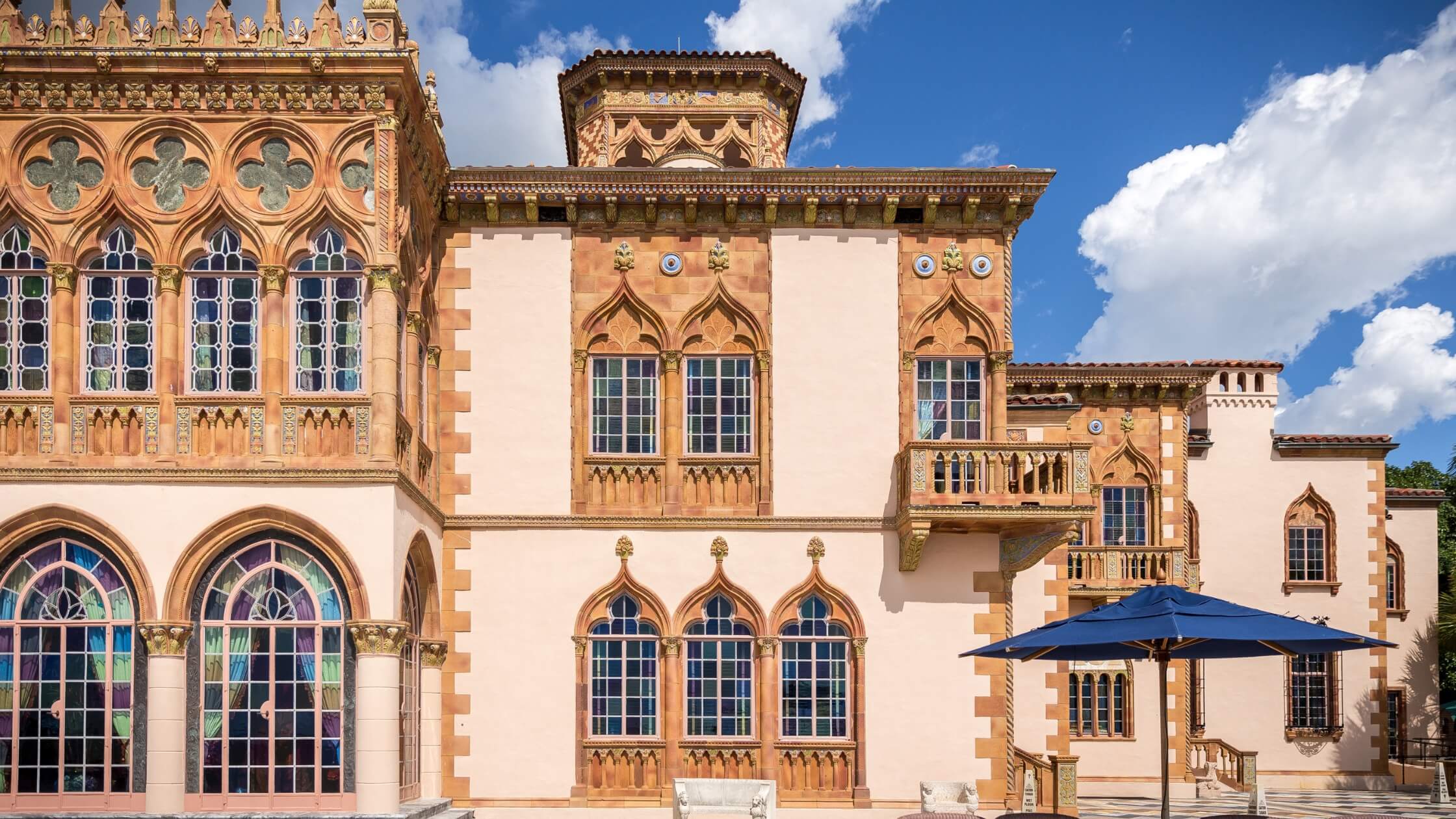How Home Designs Have Transformed Over Decades of Sarasota’s Architectural Eras
The Suncoast is not only a breathtaking paradise, from its world-renowned beaches to award-winning master-planned communities, but also a melting pot of rich history and deep-rooted heritage revered to this day. Named the fifth-best place to live in the nation and No. 1 in Florida by U.S. News & World Report, Sarasota in particular is at the epicenter of this unique entanglement and evolution of culture across our region – especially when it comes to architecture. Over 100 years of designs, influenced by developers’ discerning tastes during the Florida Land Boom and the region’s prolific arts scene, are still beloved and experienced in quiet neighborhoods and across our county’s many historic properties.
In fact, at Lee Wetherington Homes, many of the incomparable custom homes we design and build pay homage to Sarasota’s iconic styles of the past, blended with timeless touches and leading-edge innovations. In this month’s blog post – the first edition of a two-part series published in January and February – our team takes a look at the remarkable transformation of Sarasota’s architecture over the decades and how these elements are included in today’s custom homes and eclectic communities.
The Rise of ‘Med-Rev’ and Its Lasting Reputation
Sarasota’s first building boom swept the area in the 1920s, and with its arrival came developers like Owen Burns and entrepreneurs and circus showmen John and Charles Ringling. It was during these years that Mediterranean Revival – an architectural style that beautifully mixes elements from eras such as Spanish and Italian Renaissance, Spanish and French Colonial, Moorish Revival, Beaux-Arts and Venetian Gothic – became extremely popular in states like Florida and California. Stuccoed walls commonly painted white, lush gardens, tiled roofs, symmetrical designs and ornate archways, typically evidenced in European seaside villas and coastal resorts, became mainstays in Sarasota and remain a staple of its artistic character.
Not only is Med-Rev found across notable properties, like the Ca d’Zan and The Ringling, but also in West-of-the-Trail neighborhoods and historic districts such as Burns Court. In fact, modernized iterations of Mediterranean styles are evidenced today. One of our past award-winning designs, the San Mateo, which won “Best Overall” in 2018 and 2019 during the Parade of Homes, incorporates iron trim, a tiled roof and the appearance of a European-style country house. Even the two-story Mainstay II, Lee Wetherington Homes’ new, impeccable modern-coastal design in LakeHouse Cove, is inspired by a blend of Sarasota contemporary with Alys Beach – Florida’s hot 30-A destination town lined with clean, white architecture infused with Moorish and Mediterranean characteristics.
Bungalow Styles Showcased a Quiet Lifestyle
The Sarasota architectural landscape transitioned in the 1930s, following the real estate boom that ushered in a wave of artistic excellence in construction. Craftsman-style bungalows began rising in areas like Gillespie Park, located just north of downtown – and it ultimately became one of the most popular small home designs ever built. Covered front porches, wide overhangs, square columns, clapboarding, detailed hardwood doors gave these homes not only in our area, but across the nation, an iconic look and were known for their efficient, practical use of space. During the Arts and Crafts movement, bungalows exuded a “cozy, homey feel.”
Bungalows typically featured open floor plans that connected living spaces across compact square footage – and natural light played a key role in creating an expansive layout. Explore the Solstice, Mainstay II or any of Lee Wetherington Homes’ original designs and you’ll notice many of these elements are incorporated throughout, such as exquisite front doors, covered in last month’s blog post, and open concepts that create a seamless flow and functionality.
Mid-Century Modern Makes Its Mark in History
Over the many decades, architectural styles throughout Sarasota’s history have factored in the area’s subtropical climate and the Florida lifestyle. That was certainly the case post-World War II, when brilliant minds like Paul Rudolph, Victor Lundy, Philip Hiss, Ralph Twitchell, Tim Seibert, William Rupp and many others spurred the movement now known in history as the Sarasota School of Architecture. A hallmark of Sarasota style in the 1940s, 50s and 60s – and still impressionable more than a half century later – these designs showcased sleek, open floor plans, abundant natural light let in through large, floor-to-ceiling glass panes, flat roofs with overhangs, floating staircases and easy transitions between indoor and outdoor spaces.
Heard these descriptions before? It’s because today’s leading-edge designers and builders, including our team, have refined and innovated upon many of these elements, which are currently utilized in custom homes – especially on the Suncoast, where natural Florida scenery is part of the experience of “home.”

